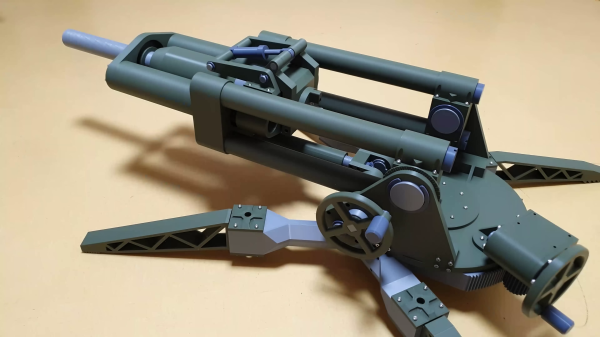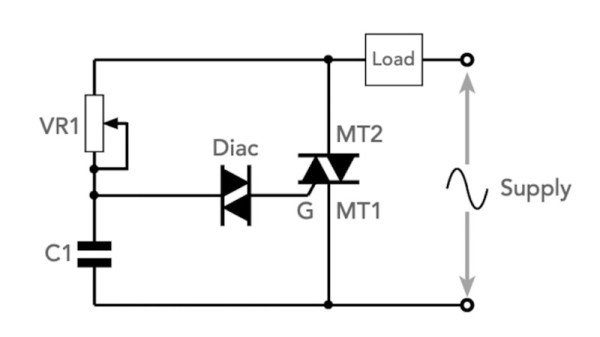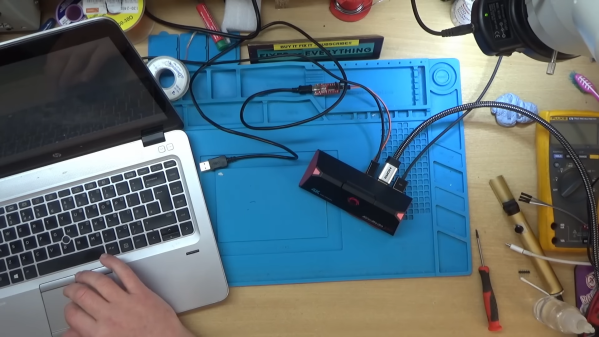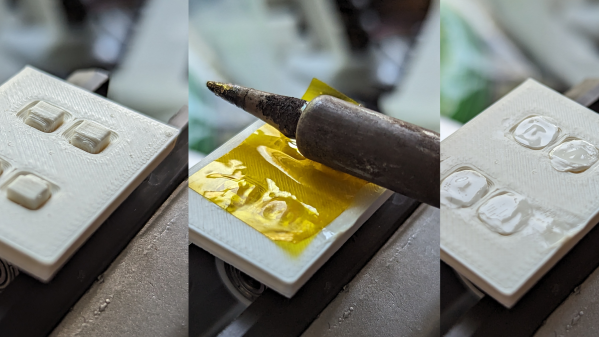Military models are great 3D printing projects, even more so if they are somewhat functional. [Flasutie] took it a step further by engineering a 3D-printed howitzer that doesn’t just sit pretty—it launches shells with a hydrogen-powered bang.
This project’s secret sauce? Oxyhydrogen, aka HHO, the mix of hydrogen born when water endures the electric breakup of electrolysis. [Flasutie] wanted functional “high explosive” (HE) projectiles to pop without turning playtime into emergency room visit, and 30 mm was the magic size, allowing the thin-walled PLA projectile to rupture without causing injury, even when held in the hand. To set off the gaseous fireworks, [Flasutie] designed an impact fuze featuring piezoelectric spark mechanism nestled within a soft TPU tip for good impact sensitivity.
The howitzer itself is like something out of a miniaturized military fantasy—nearly entirely 3D printed. It boasts an interrupted thread breech-locking mechanism and recoil-absorbing mechanism inspired by the real thing. The breechblock isn’t just for show; it snaps open under spring power and ejects spent cartridges like hot brass.
Watch the video after the break for the build, satisfying loading sequence and of course cardboard-defeating “armor piercing” (AP) and HE shells knocking out targets.

















